29 F. high temperature at Twins Cities International Airport Sunday.
35 F. average high for March 4.
30 F. high temperature one year ago, March 4, 2011.
2" snow on the ground at KMSP. That number should drop to zero by Wednesday evening.
52 F. predicted high for Tuesday.
60 degree plus high temperatures predicted for MSP on March 15 (GFS model).
4,917 heating degree days as of March 4 in the Twin Cities. Average to date: 5, 943 hdd. Source: NWS.
17.7% We've saved almost 18% heating our homes and businesses since July 1, 2011, based on heating degree data.
117. Preliminary number of confirmed tornadoes that touched down last Friday. Source: NOAA's
SPC.
Photo credit above: "
Unidentified women search through debris of Ted and Brenda Tolbert's Holton, Ind. home Sunday, March 4, 2012. A string of violent storms scratched away small towns in Indiana and cut off rural communities in Kentucky as an early-season tornado outbreak killed at least 37 people on Saturday. The Tolberts are in the hospital after their house fell on them during the storms. (AP Photo/Ernest Coleman)."
219 miles. Path-length of March 18, 1925 "Tri-State Tornado", that killed 695 people in Missouri, Illinois and Indiana. Details below.
12,000. Average number of influenza (flu) deaths every year in the USA. So far this winter: "a few hundred". Source: New York Times. Details below. Photo credit: AP Photo/Odessa American, Heather Leiphart.
"
Last month the International Energy Agency (hardly an alarmist body of scientists) announced a record annual increase in atmospheric carbon and further warned that without bold action in the next five years, the Earth's temperature will push beyond the 2 degrees Celsius that climate scientists consider an ominous tipping point." - from a story at kentucky.com.
Winter's Last Stand Up North? Broadcast Weather meteorologist Todd Nelson snapped this photo between Two Harbors and Goosebury Falls Sunday, a light snow falling on show-covered highways - plenty of slick spots. Much of the snow will be gone from the Twin Cities metro on south by Tuesday, snow lingering a few more weeks up north, where a cool 1 to 2 feet of snow is on the ground.
Easiest Winter In 81 Years. You have to go back to the Winter of 1930-31 to find a Twin Cities winter so warm (and snow-free). As you can see from MN State Climate
data above this is the 4th warmest meteorological winter on record. 2001-2002 was warmer, but 66" snow fell. To find a comparable winter of unusual warmth AND lack of snow you have to go back to 1930-31
snowfall records (see graph below, data from the MN State Climate Office).
Crocus Alert. Yes, spring is coming early to much of the USA, including Lancaster, Pennsylvania, where Joan Kruhoeffer snapped this photo of emerging crocus in her garden.
Winter: Missing In Action. The 500mb map above (GFS) is valid March 20. Funny, it looks like something out of April or early May, the main core of jet stream winds lifting into southern Canada. This implies 50s, even a few 60s by mid March. Our fast-forward spring rolls on...
Mind-Numbing Numbers. As of midday Sunday the tornado count from Friday's (unusual) early-season outbreak was up to 117, according to
SPC. The most tornadoes in a 24 hour period? April 3-4, 1974, when 148 tornadoes touched down on 13 states.
*
EverythingWX has a list of all the confirmed tornadoes from last Friday.
The 1925 Tornado Was Worse, But That's Little Comfort To People In Harrisburg. Here's an insightful article about historical perspective and the recent (devastating) tornado that hit Harrisburg, Illinois, from the
Evansville Courier and Press: "
In Illinois, the tornado of March 18, 1925, is the one to which all others are compared. Known as the Tri-State Tornado, this twister traveled 219 miles from near Ellington, Mo., across Southern Illinois to near Princeton, Ind. A total of 695 people were killed across the three states with more than 2,000 injured. In Illinois alone — during the first 120 mile stretch of the storm's path — 541 people lost their lives. The fact that the Tri-State Tornado of 1925 remains the single most devastating storm in Illinois history is no comfort to the families in Harrisburg, Ill., who lost a loved one in Wednesday's EF-4 tornado. For the 100 or more injured in the storm, their scars will be just as painful, just as deep and will last just as long as those who survived the '25 twister."
Photo credit above: "
Looking east from Brady Street where five of six people were killed by a tornado in Harrisburg, Illinois, Thursday, March 1, 2012. (Abel Uribe/Chicago Tribune/MCT)."
* for more on the Tri-State Tornado of 1925,
click here - data courtesy of Wikipedia.
The Tornado Outbreak Of March 2 In A Historical Context. H. Michael Mogil, an expert of tornado climatology and historical perspective, has some timely thoughts on last Friday's outbreak in this
Examiner post.
Photo credit above: "
In this aerial photo, debris is strewn about, Saturday, March 3, 2012, in Marysville, Indiana, after a tornado swept through the area Friday. A string of violent storms demolished small towns in Indiana and cut off rural communities in Kentucky as an early season tornado outbreak killed more than 30 people, and the death toll rose as daylight broke on Saturday's search for survivors.(AP Photo/Al Behrman)."
“
The Henryville, Indiana tornado (Clark County) rated an EF4 Major Tornado – just spoke with the NWS office in Louisville. The damage surveys for other areas including Chelsea and Marysville will be tomorrow.” - Indianapolis WTHR-TV meteorologist (and friend) Chikage Windler in a Sunday tweet.
Meteorologist: "It's The Type Of Storm We Struggle With The Most". When it comes to tornadoes everyone (NWS, local officials, meteorologists) want to err on the side of caution and safety. It's better to issue a tornado warning and have nothing materialize than to cross your fingers, and have a tornado unexpectantly roar through a heavily-developed area.
The Charlotte Observer describes the quandary forecasters face when threatening-looking signatures and circulations show up on Doppler: "
A thin line of thunderstorms was racing toward the Charlotte area at 60 mph early Saturday, about to produce a quick-hitting but strong tornado. And the people in its path, along a 3.8-mile stretch of Mecklenburg and Cabarrus counties, had no warning. On Saturday, a meteorologist at the National Weather Service's office in Greer, S.C., said forecasters never saw it coming. "It's the type of storm that we struggle with the most," meteorologist Harry Gerapetritis said of the EF2 twister that produced winds of up to 135 mph and damaged or destroyed about 90 homes, injuring three. "But we didn't get it right," he added."
Graphic credit above: "
Posted by Brad Panovich WCNC @wxbrad: Heads up Cabarrus Co don't like this storm."
The Science Behind The Tornado Outbreak. Andy Mussoline at
AccuWeather does a good job tracing the chronology of last Friday's deadly weather recipe: "
Friday, March 2, 2012 may be known as one of the worst tornado outbreak for early March on record. Eighty sightings of tornadoes were reported between 10 a.m. and 9 p.m. Friday. Friday's outbreak could include more tornadoes in one day than typically occur over the entire month of March in the United States."
Wave Goodbye To The Snow In Your Yard. We'll come close to 40 later today, a good chance of topping 50 Tuesday afternoon, followed by a slight cooling trend later in the week (but still a few degrees above average). Highs may reach 50 again by the weekend, Saturday probably the drier, nicer day. A little light rain may arrive by Sunday.
Latest Snowcover. NOAA's
NOHRSC map shows a couple inches of snow in the metro (a lot more north metro), with 8-12" in the Brainerd Lakes area, as much as 20-30" over far northern Minnesota and Lake Superior's North Shore. By the end of this week snowfall amounts will be roughly half what they are right now.
Snowflakes 401. From the La Crosse office of the National Weather Service: "
Can you find two snow flakes which are alike? Many of the snow flakes that fell across the area today are called stellar dendrites (the type of snowflakes that you normally see on Christmas cards). They form when the temperatures aloft are around 5F (-15C). The snowflake by itself on the bottom to the right is great example of what a stellar dendrite looks like."
Snow Squall. From the State College, Pennsylvania office of the National Weather Service: "
a snow squall obscures our view of Tussey Mountain and Boalsburg on Sunday afternoon."
Read more here: http://www.charlotteobserver.com/2012/03/03/3066447/meteorologist-its-the-type-of.html#storylink=cpy
Read more here: http://www.charlotteobserver.com/2012/03/03/3066447/meteorologist-its-the-type-of.html#storylink=cpy
A Record Wrecker For Rainfall. Australia's
theage.com documents extreme rainfall amounts Down Under: "
RAINFALL across Victoria's north-east over the past week has smashed hundred-year highs, with most locations having their wettest seven days on record. Corryong's 312 millimetres of rain doubled the previous weekly record set 119 years ago. The Bureau of Meteorology said Wodonga had 256 millimetres, topping its record set in 1893, and Mount Buffalo had 525 millimetres, beating its record of 483 millimetres set in 1956."
Paul's Links. Here are a few more of the URL's I rely on from day to day. Hope you can use a few of these for your meteorological needs down the road.
1).
Advanced Hydrological Prediction Service. NOAA's AHPS site is a terrific resource to track (Doppler estimated) precipitation amounts for Minnesota, the Upper Midwest, or the entire USA, looking back 24 hours, or 180 days. In addition to tracking observed amounts, you can see how it compares to normal precipitation values, allowing some true perspective. Good information for farmers, gardeners - anyone who needs to keep tabs on precipitation.
2).
Preliminary Local Climatological Data. Minnesota's State Climate Office (Minnesota Climatology Working Group) does an excellent job updating data for the Twin Cities (or any other large Minnesota town) at this site. Need to know how much snow fell on a certain day in 2008, or what the high was on August 23 of last year? This site will tell you everything you need to know.
3).
Twin Cities Weather, Decade By Decade. Speaking of the Minnesota Climatology Working Group, this is a good site for researching specific weather on a specific day going back before 2000. If you want to look at data for the 90s, just chance the URL from msp1980's.htm to msp1990's.htm and the new data will pop up. One note: January shows up as "1", as in first month of the year, the next column is the day of the month, followed by high, low, precip, snowfall and snow depth. Pretty intuitive.
Ask Paul. Weather-Related Q&A.
Paul
"As one that has always been interested in weather, its been my observation that when our local media meteorologists say the SPC has put us in a slight risk area for severe storms, some sort of severe storms seems to fire off even though we were only in a slight risk.
That has caused me to look more deeply into the different type of products put out by the SPC, and I was alarmed to learn that my understanding of a slight risk area was grossly underestimated. That has since lead me to learn as much about weather and forecasting as I can, and to recognize storm structure and become a spotter for the NWS.
I am one that believes a well informed public is an aware and prepared public, statements like, stay sky....or keep in ear on ....just doesn't cut in my opinion.
So here is my question....
Paul could you please describe in detail the meaning of the Storm Predictions Convective Outlook pages? I see Categorical and Probabilistic products listed but would like a better understanding of them.
Thank you."
Randy Peterson
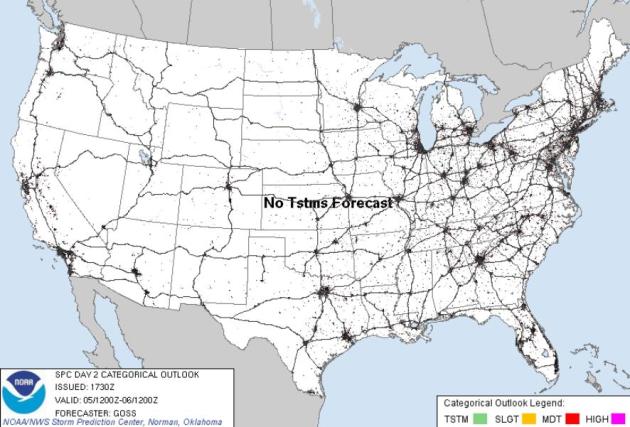
Randy - your question is a good one, and especially timely in light of Friday's tornado catastrophe. Every morning SPC, the Storm Prediction Center, a division of NOAA, issues "convective outlooks" that try to specify the aerial coverage and intensity of severe storms later in the day. The forecasts look at dozens of atmosphere variables, including the potential for low-level wind shear (which gives severe, rotating "supercell" thunderstorms their spin), instability, low-level moisture and dry air in the mid layers of the atmosphere. Most days between now and August will have a "slight" risk somewhere in the USA. This is fairly typical, and implies a good chance of Severe Thunderstorm Watches being issued later in the day. When you see a "moderate risk" from SPC it means a much better chance of tornadic storms. Expect Tornado Watches and Tornado Warnings later that day for the specified area. A (rare) "high risk" implies an extreme risk of tornadoes, especially large, long-lasting, potentially violent EF2-4 tornadoes. SPC meteorologists do a very good job, but tornadoes often fall outside a moderate or high risk area - even days with only a "slight risk", as you point out, can spawn tornadoes. It's a guide, and these forecasts get a little bit better every year. An estimated 70% of all tornadoes in the USA touch down in an area that has been placed under a Tornado Watch. It's a fine line: you don't want to overwarn people (they become complacent and believe forecasters are merely "crying wolf"). But you certainly don't want to under-warn people either - if anything you want to err on the side of safety and caution. Better to overwarn than underwarn.
Here are more details from
SPC: "
A SLGT risk implies that well-organized severe thunderstorms are expected but in relatively small numbers/coverage, or a small chance of a more significant severe event. Not all severe storm events will be covered with a SLGT risk, especially during the summer when short-lived, "pulse-type" severe storms are relatively common during the afternoon. A MDT risk implies a greater concentration of severe thunderstorms, and in most situations, greater magnitude of severe weather and greater forecaster confidence compared to a SLGT risk. A MDT risk is usually reserved for days with substantial severe storm coverage, or an enhanced chance for a significant severe storm outbreak. Typical MDT risk days include multiple tornadic supercells with very large hail, or intense squall lines with widespread damaging winds. The HIGH risk implies that a major severe weather outbreak is expected, with large coverage of severe weather and the likelihood of extreme severe (i.e., violent tornadoes or very damaging convective wind events). The HIGH risk category is reserved for the most extreme events with the least forecast uncertainty, and is only used a few times each year. The outlook categories are related to the specific tornado, damaging wind, and large hail probability forecast graphics on Day 1, and the total severe storm probabilities for the Day 2 and Day 3 outlooks."
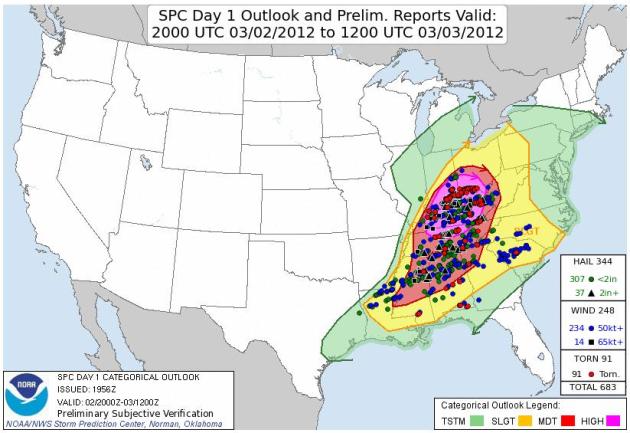
. Here was the
convective outlook issued by SPC last Friday morning (slight risk is yellow, moderate risk is red, high threat is purple). The red dots (which are tough to see) are actual tornado touchdowns. As you can see SPC really nailed the area that experienced the most tornadoes and reports of large, damaging hail.
The system isn't perfect, but America has the best weather service in the world, bar none. The death toll last Friday could have been well into the hundreds - but between SPC, local NWS offices and local TV meteorologists people living in these risky zones had plenty of warning. if they were (awake) they knew that it was going to be a very rough afternoon and evening. Many schools and businesses even let out early on Friday, so people could be home with their families. Thanks for a great question Randy. I have a hunch it's going to be another very busy severe storm season for Minnesota meteorologists.
Convective Outlooks. Here's a
good summary of the anticipated severe threat for the next few days, courtesy of SPC. Little or no risk of severe storms for the USA. The next chance of severe storms probably won't come until Thursday and Friday, from Texas to Tennessee.
U.S. Smartphone Ownership Eclipses Feature Phones. The story from
gigaom.com: "
The U.S. is now officially a smartphone nation, with 53 percent of all adult cell phone owners claiming ownership of a smartphone, according to a new report by the Pew Internet & American Life Project. It’s the first time that smartphone penetration has been reported to eclipse feature phones in the U.S. though the milestone has been predicted for some time. Pew found that smartphone ownership in February 2012 has jumped to 46 percent of all adults from 35 percent in May of 2011 while feature phone ownership has slipped from 48 percent to 41 percent over the same period. A slim 12 percent of adults said they still don’t own any phone at all."
Is This The iPad 3? Mashable.com (courtesy of MIC Gadget) has video of what
may be the new iPad 3, scheduled to be formally announced on Wednesday. If you have an iPad itch that a scratch won't reach, read on: "
Itching to see what the iPad 3 looks like and don’t want to wait until Wednesday? Tech blog MIC Gadget has reportedly obtained parts of the next-generation iPad. If this is real, it’s the closest look yet at the new tablet from Apple. In line with industry speculation, the clip reveals that the iPad 3 touts a larger camera lens and a slightly thicker shell. In addition, it will once again include a home button, disputing rumors that the touchscreen itself could serve as the home button. Apple announced last week it will be holding a press event on Wednesday, March 7 in San Francisco to unveil something to “see” and “touch.” Flurries of speculation have since circulated the Web with many looking for clues about the highly-anticipated launch of the iPad 3."
Parade Of Homes: Don Shelby's Green Dream. The Star Tribune has a
nice article (and video) focusing on Don's new, energy-efficient green home in Excelsior. He's trying to walk the talk, and create a new home that has a minimal carbon footprint, while creating a new dwelling that will save considerable money on energy in the years ahead. Check out his new pad in this year's Parade of Homes - another sign of spring! "
Don Shelby was raised to be frugal as a kid growing up in Muncie, Ind. "My mom would always tell us to shut the door when we left the room," said the recently retired WCCO-TV news anchor. "And she cooked one big meal a week, and the rest of the week we ate leftovers." His dad's stamp and coin collections taught Shelby that objects had value no matter how old they were. Later, as a journalist, he covered environmental issues and launched WCCO's Project Energy Series. "The more I reported on this breaking wave of technology, the more I became interested in incorporating it in my lifestyle," he said. "I wanted to walk the talk." So when Shelby and his wife, Barbara, had the opportunity to build a home exactly the way they wanted, their mission was to go green, incorporating the latest technologies, as well as recycled and repurposed materials."
End Of The Rainbow. Not to be a cynic or anything, but if anyone asks, at the end of the rainbow is...an outhouse? Spread the word. I have a hunch this was Photoshopped. Just a hunch.
Last Chilly Day For Next Two Weeks. In spite of dim sun temperatures were 4-8 degrees cooler than average across much of Minnesota; afternoon highs ranging from 21 at Alexandria to 27 St. Cloud, 29 in the Twin Cities (30 in downtown St. Paul).
Paul's Conservation Minnesota Outlook for the Twin Cities and all of Minnesota:
TODAY: Plenty of sun, breezy, milder. Winds: S 10-20. High: 39
MONDAY NIGHT: Mostly clear, not as chilly. Low: 33
TUESDAY: Taste of April. Melting snow. Fading sun. High: 52
WEDNESDAY: Patchy clouds, turning cooler. High: 37
THURSDAY: Partly sunny and pleasant. Low: 25. High: 42
FRIDAY: Plenty of sun, more hints of spring in the air. Low: 30. High: 47
SATURDAY: Nicer day of weekend. Fading sun. Low: 34. High: 51
SUNDAY: Cloudy, unseasonably mild. Chance of rain. Low: 37. High: 50
Easiest Twin Cities Winter Since 1930-31
Winter is, for all intents and purposes, over. Of course we'll see more flurries, a few minor "slush events" - don't pack away the heavy jackets just yet. But subzero weather is behind us now. Only 3 night below zero, btw. Second fewest on record. By mid-March we'll see 60s - 70 still not out of the question, as moisture surges north out of the Gulf.
Silver lining: we're heading into a wetter pattern: 1-2" rain by mid-month. With the warmth & moisture may come an early start to severe storm season.
No arctic fronts. A few more dribs and drabs of snow. Even if we do see snow in late March it'll melt in 24 hours. Winter over on March 5? I must be lost. We're still living in "Minne-snowda", right?
Welcome to the easiest winter since 1930-31. Although the 4th warmest since 1872 it's the combination of mild and snow-free that's so unusual. 2001-2002 was warmer, but we saw 66 inches of snow. A bit more than the 22 inches this winter. 1931 was warmer with less snow; only 14 inches fell
It looks much too warm aloft for snow through the 3rd week of March. 50s sweep in Tuesday, again next weekend.
Take a nice photo of the snow in your yard. It'll be mostly-gone within 48 hours.
Cigarette's Lessons For Climate Change. The story from the
L.A. Times. Here's a snippet: "
There are limits to the parallels between smoking and climate change, of course. People can live quite well without smoking, while society does need to consume energy — even if not in the amounts it now does or from such damaging sources. But there are nevertheless ways in which our experience with tobacco can help us grapple with the overwhelming problem of climate change. First, let's examine some of the ironies here. As Naomi Oreskes and Erik Conway point out in their book "The Merchants of Doubt," the fossil fuel industry and the hard right have used the same tactics as the tobacco industry to seed doubt about the danger of climate change."
Photo credit above: "
The cooling tower of a coal-fired power plant in Dadong, Shanxi province, China, is seen on Dec. 3, 2009. (Andy Wong/AP Photo / March 2, 2012)."
Denial Of Climate Change Dangerous Political Stand. Here's an excerpt of an Op-Ed at
kentucky.com: "
What gets lost in this murky sauce of minor factors is a simple truth: The Earth's fluctuating temperature has always risen and fallen according to the amount of carbon dioxide in the atmosphere. The level of carbon dioxide in the atmosphere has risen from the pre-industrial number of 280 parts per million to 383 parts per million in 2007. Never have CO2 levels spiked like that in the 600,000 years we can measure with ice core sampling, and therefore, only the burning of coal, oil and gas by human beings could account for that rise."
Read more here: http://www.kentucky.com/2012/03/04/2094514/ky-voices-denial-of-climate-change.html#storylink=cpy
The Best Part Of Global Warming. One big silver lining to one of the mildest winters on record for most of the USA? Fewer cases of flu. More details in
The New York Times: "
The long-term troubles this sort of weather predicts are alarming. In the short term, however, our warm winter may have one unforeseen and felicitous consequence: a drastic reduction in the incidence of influenza. Flu seasons can begin as early as October, and end when the number of positive tests for the virus approaches zero, generally sometime in March or April. There has been a wide variation in the number of deaths attributable to influenza in past seasons — it has reached as high as 49,000 — but the average is around 12,000."
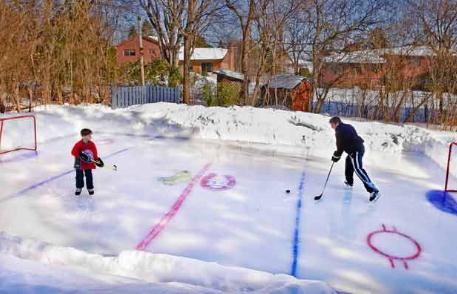 Final Periods For Old-Time Shinny On Natural Ice, Climate Scientists Say
Final Periods For Old-Time Shinny On Natural Ice, Climate Scientists Say. The story from
The Vancouver Sun: "
A team of Canadian climate scientists is predicting the widespread disappearance of outdoor hockey rinks across the country in the next 50 years due to global warming — with some regions of the sport’s spiritual birthplace likely to witness an even earlier eclipse of old-time shinny on natural ice. “The ability to skate and play hockey outdoors is a critical component of Canadian identity and culture,” three researchers from Montreal’s McGill and Concordia universities write in the latest issue of the U.K.-based scholarly journal Environmental Research Letters. “Wayne Gretzky learned to skate on a backyard skating rink; our results imply that such opportunities may not be available to future generations of Canadian children.”
Photo credit above: "
Fred Fizet and his son Olivier play hockey on the backyard rink at their home in Baie d'Urfe outside Montreal. Photograph: John Mahoney , The Gazette."
Read more here: http://www.kentucky.com/2012/03/04/2094514/ky-voices-denial-of-climate-change.html#storylink=cpy
Take The Subway. An insightful look at (undeniable) trends from St. Louis Park's very own Thomas Friedman, reporting for
The New York Times: "
But you better believe this: The planet is getting flatter and more crowded. There will be two billion more people here by 2050, and they will all want to live and drive just like us. And when they do, there is going to be one monster traffic jam and pollution cloud, unless we learn how to get more mobility, lighting, heating and cooling from less energy and with less waste — with so many more people. We can’t let the climate wars continue to derail efforts to have an energy policy that puts in place rising efficiency standards, for buildings, windows, traffic, housing, packaging and appliances, that will drive innovation — which is our strength — in what has to be the next great global industry: energy and resource efficiency."
Global Warming: Multiple California Bird Species At Risk. Here's an excerpt from the
Summit County Citzens Voice: "
More than 100 of California’s bird species are vulnerable to global warming impacts, including 21 of the state’s 29 threatened and endangered bird species that will be further impacted by climate change, increasing their risk of extinction. At-risk birds include wetland birds like the California black rail, California and Yuma clapper rails and three species of song sparrow found only in the tidal marshes of San Francisco Bay. Species that make a living at sea or near-shore waters and that nest on islands or rocky shores are also highly vulnerable, including species like the Cassin’s auklet, common murre, black oystercatcher and the iconic white and brown pelicans, according to scientists with the Point Reyes Bird Observatory and the California Department of Fish and Game."
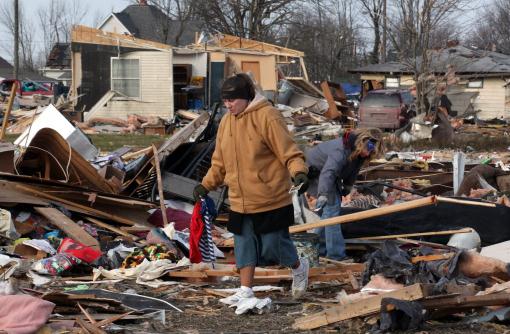
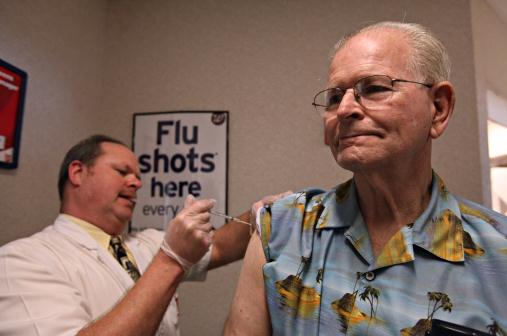

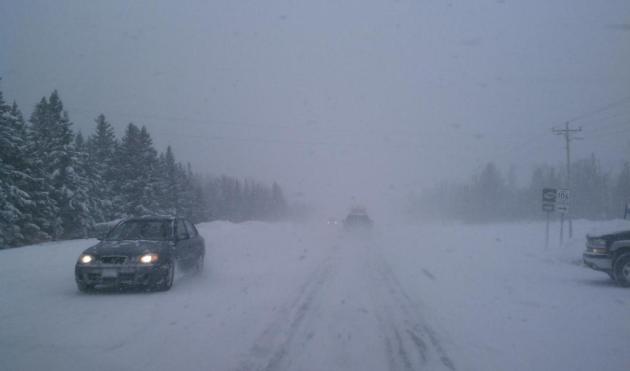
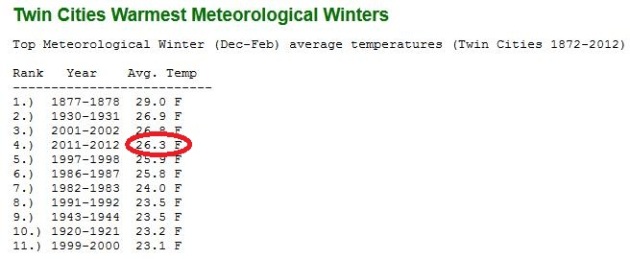


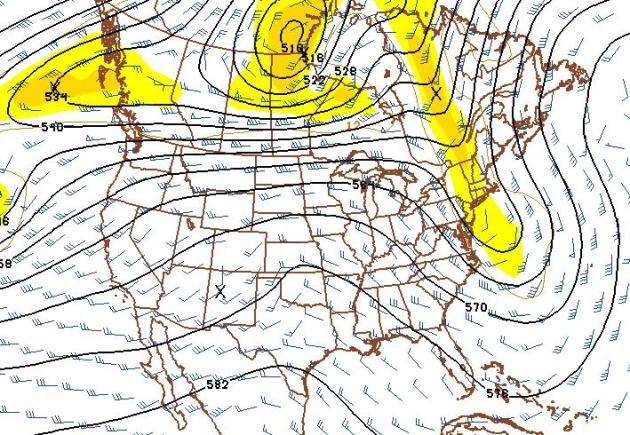
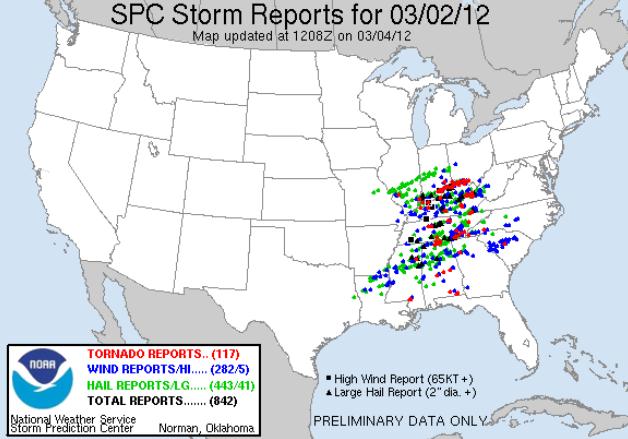
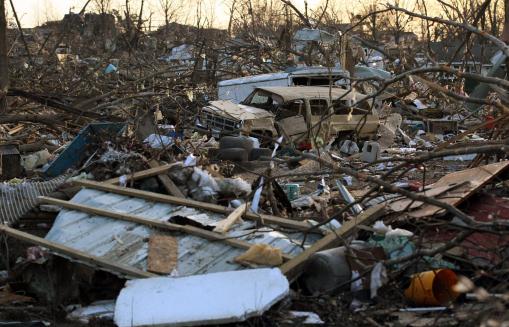
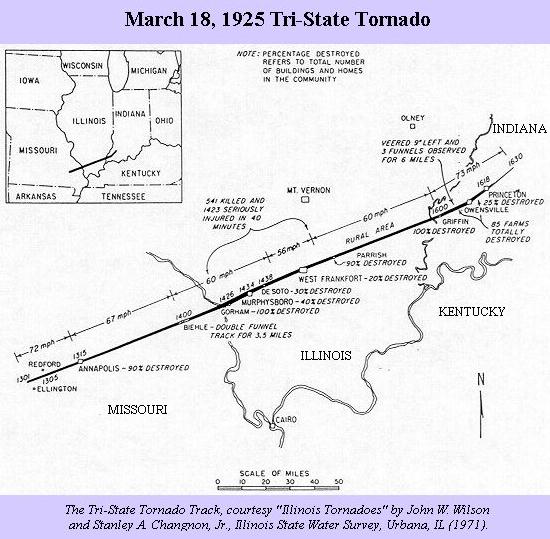
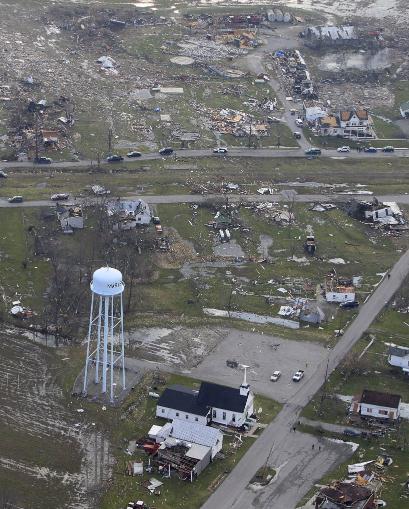

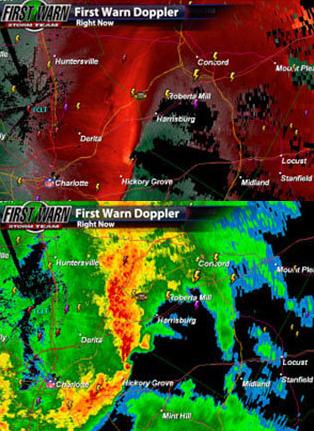
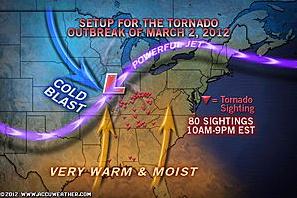
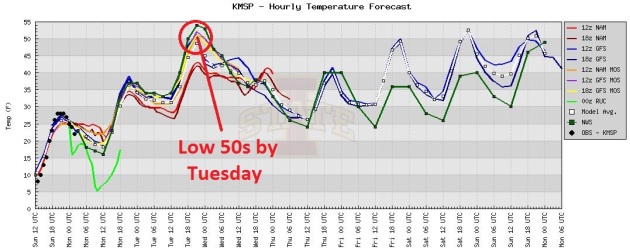
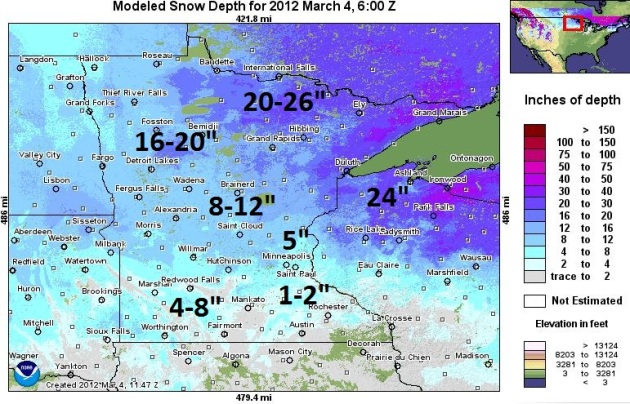
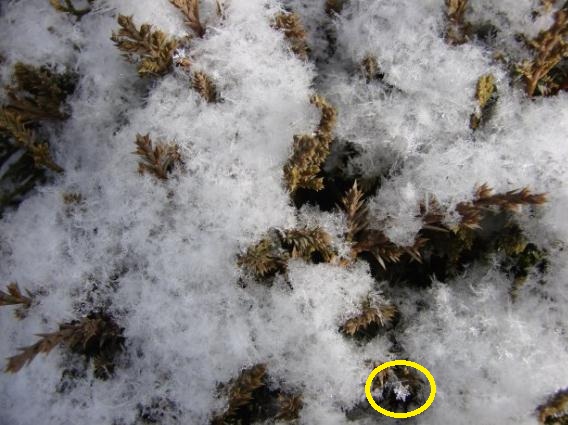
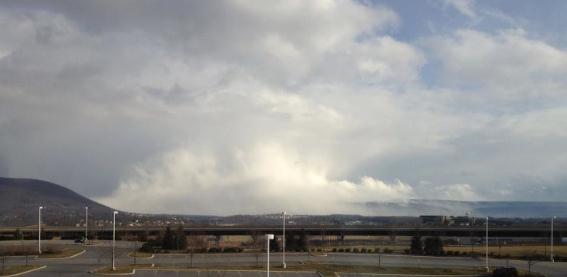
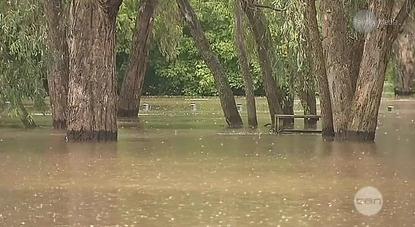
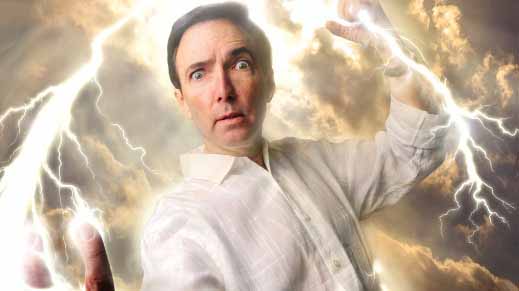
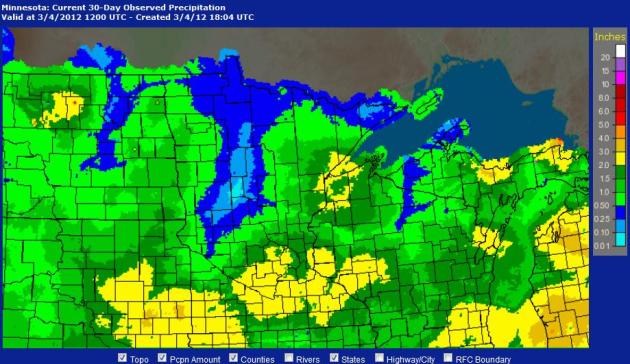
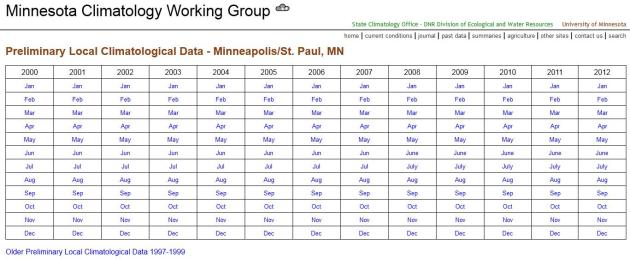
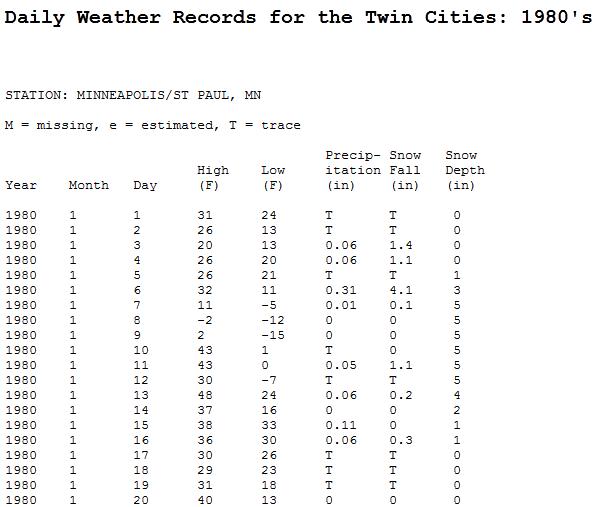


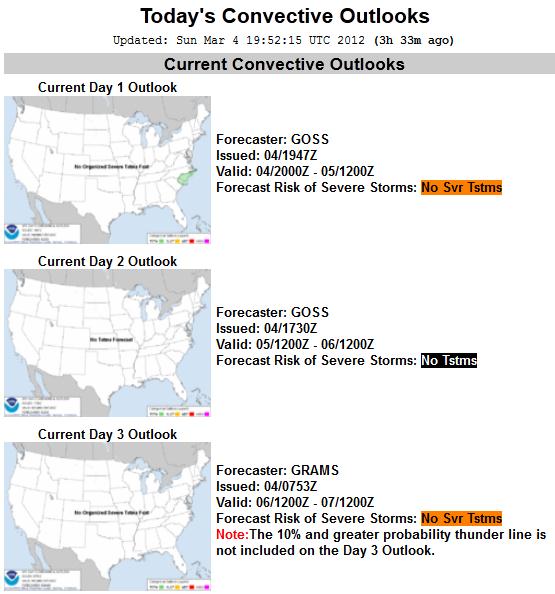


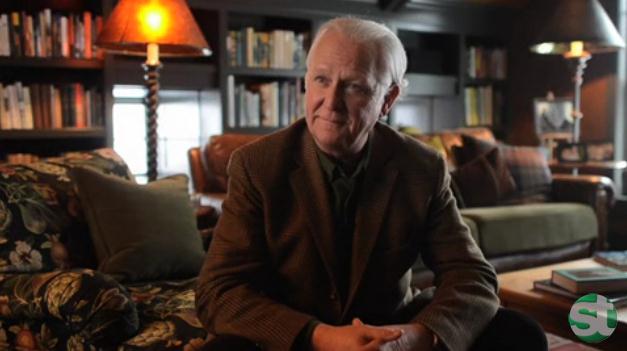
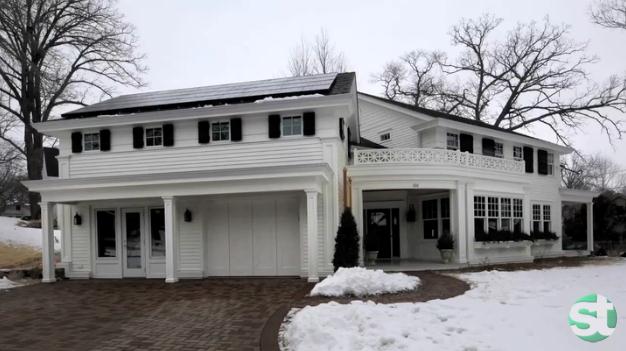
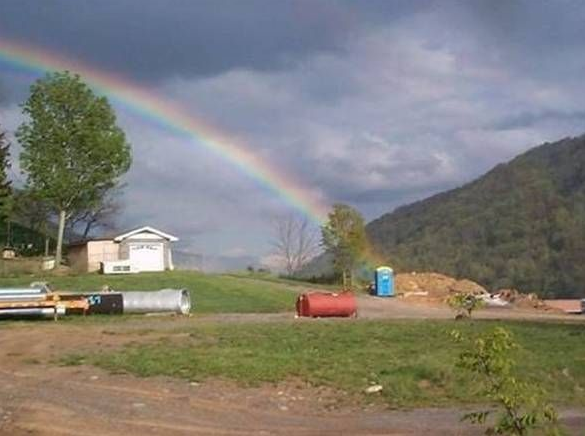



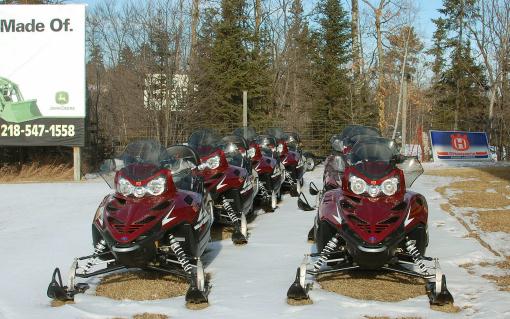
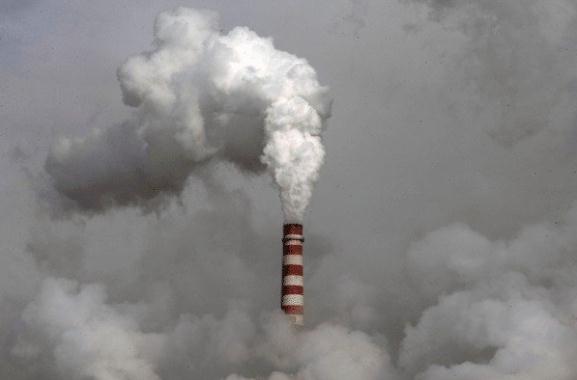

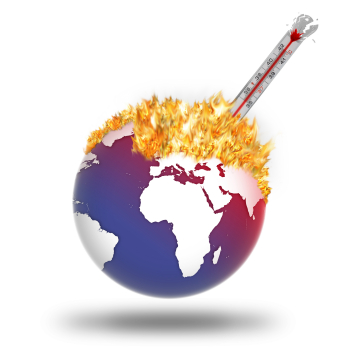


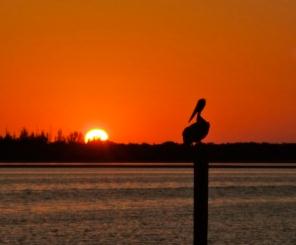
No comments:
Post a Comment